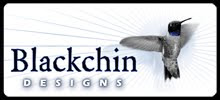As always, I had some excellent adventures over the weekend. But I have not a picture to show for it. If you will, try to imagine why.
Picture this: It's 6:20 a.m. on Sunday morning, and I have just pulled into the parking lot of Gainesville's Target: this is the meeting place for Alachua Audubon's trip to Cedar Key. When I had gotten up an hour earlier, I checked online to find there was a 60% chance of rain and thunderstorms that would last throughout the day. Any sensible person would have gone back to bed. But I'm not a sensible person.
6:35 a.m: I return from the restroom at a nearby gas station to find that I am one of the drivers for the trip (the reason for the rendezvous at Target was for us to consolidate into carpools and arrange rides). I load my passengers, who I already know—a fellow UF faculty member and another local birder—into my embarrassingly dirty car and we take off, just as the rain starts.
7:00 a.m.: Our first stop is supposed to be at the Scrub Jay reserve just outside Cedar Key. But the rest of the caravan is nowhere in sight—I had gotten stuck behind a traffic light on the way out and the others are now WAY in front of me. Probably looking at Florida Scrub Jays. But my car is old and weak, and the road between Gainesville and Cedar Key is a bit of a speed trap, so I drove conservatively. My UF colleague, in the catbird seat, assures me that the guy in front of us drives like a maniac, so losing him was kind of predictable.
7:45—We pull into the Scrub Jay reserve just as the others are returning to their cars. They didn't see any Scrub Jays. Thank goodness. Otherwise, I would have felt awful. Even more awful than I already felt about fulfilling everyone's worst stereotypes about slow Asian drivers.
8:00—We're at the side of the road off the first bridge leading into Cedar Key, looking at a bold, brightly colored, and perversely cooperative Nelson's Sharp-tailed Sparrow (or whatever this bird is officially called now...). All of us who had brought cameras are hitting ourselves upside the head. Why? It was raining cats and dogs, so we had all left our gear in our cars. Meanwhile, that sparrow—whose buffy head and breast shone orange in the tiny bit of sunlight peeking through the rain clouds—just sat there, as if daring us to bring our cameras out into the rain. Bastard.
8:20—The 10 or so field trip participants are huddled under a picnic shelter by the beach, resigned to our Big Day being more like a rainy Big Sit—or more accurately, a Big Soak. "Okay, did anyone bring a deck of cards?" our trip leader said only half jokingly. Still, we manage to rack up about 20 species.
8:45—We caravan to Cedar Key's tiny airport, where a Scissor-tailed Flycatcher had been lingering a few weeks before. It's still raining buckets. As soon as we arrive, our trip leader debarks from his car and tells each of the other drivers that we're going to Shell Mound—with luck, the rain will have stopped by time we get there.
9:00—It's still raining torrents at Shell Mound. Our trip leader reluctantly scotches the whole trip. Everyone gets back in their cars and heads eastward back to Gainesville.
9:15—My UF colleague in the front seat is clearly unhappy, and growing unhappier by the moment as Cedar Key receded into our rear-view mirror. I ask him if he wants to go back to Cedar Key and wait until the rain let up. He wanted to go back to Shell Mound instead, which we did. We passed several other field trip participants heading home as we reversed course. They must have thought we were crazy.
9:30—Miraculously, there was a break in the storm and we were in business. At Shell Mound, we lingered on the boardwalk overlooking a sandbar and reed-filled area, and found a number of birds everyone else had missed: White Pelicans, Clapper Rails, Marsh Wrens, Marbled Godwits, and a Wilson's Plover. There were also yet more Nelson's Sharp-tailed Sparrows and several Bald Eagles out in the distance. But the clouds lingered ominously overhead, and we left our cameras in the car.
11:00—The clouds darkened again, and we got into the car just as the rain started to fall again. On the way back, my passengers insisted that I stop for gas, even though I had 3/4 of a tank left; they paid for the fill.
12:00—Back at Target, the skies are clearing and the sun is starting to shine though the clouds. My friend in the front seat declares that he is going to Hague Dairy, since the skies to the north of us look clear. The poor birder in the back seat, who has said scarcely a word over the course of the whole trip, is no doubt relieved to be free of us.
1:30—A particularly intelligent squirrel has figured out how to feed off my "squirrel-proof" bird feeder. It's now stopped raining, and I have my camera out to catch him (or her) in the act. But the squirrel has had its fill and doesn't return.
But it was still pretty cool when it was there. And when that sparrow was there at Cedar Key. And those Clapper Rails. You just have to trust me on this.

















